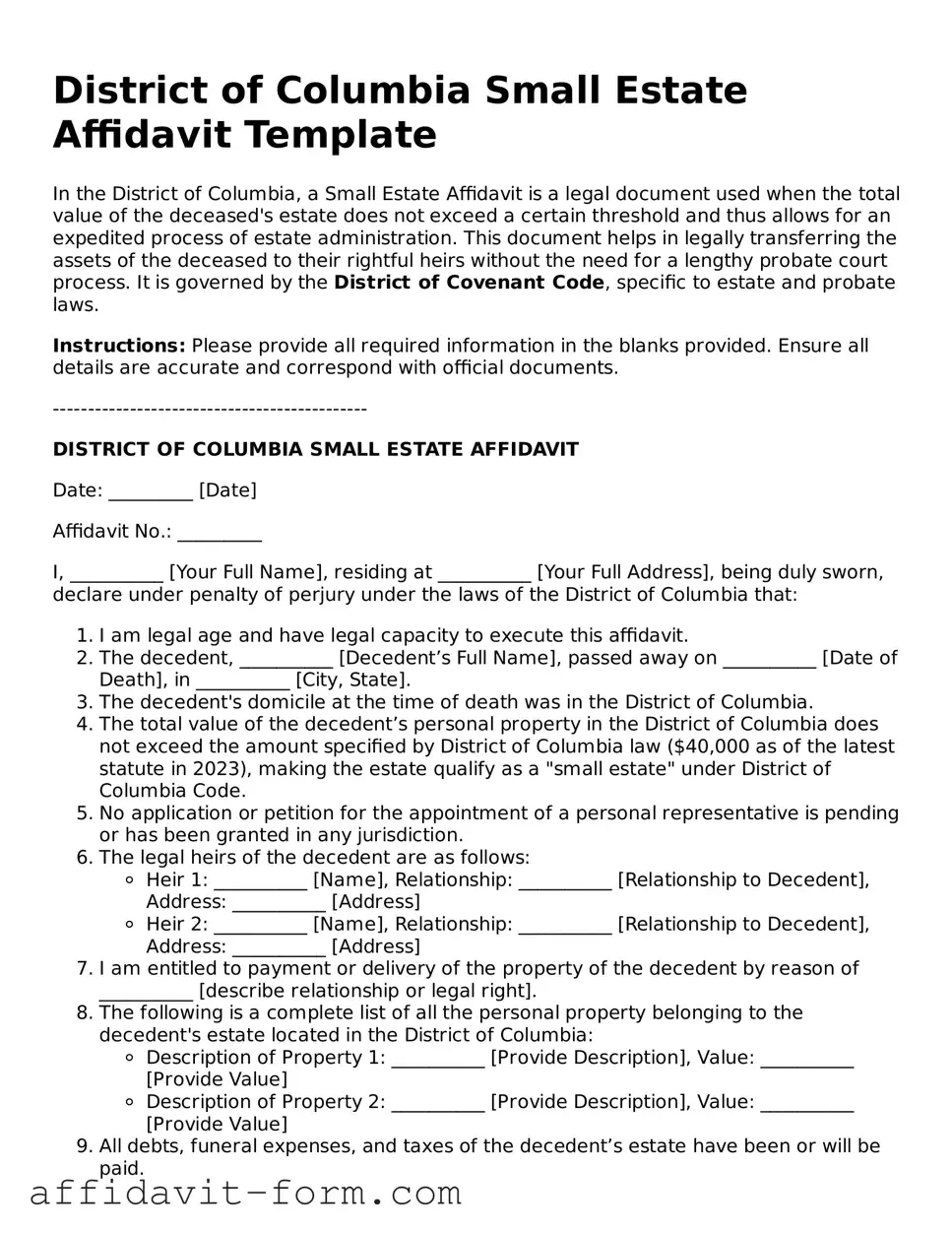District of Columbia Small Estate Affidavit Template
In the District of Columbia, a Small Estate Affidavit is a legal document used when the total value of the deceased's estate does not exceed a certain threshold and thus allows for an expedited process of estate administration. This document helps in legally transferring the assets of the deceased to their rightful heirs without the need for a lengthy probate court process. It is governed by the District of Covenant Code, specific to estate and probate laws.
Instructions: Please provide all required information in the blanks provided. Ensure all details are accurate and correspond with official documents.
---------------------------------------------
DISTRICT OF COLUMBIA SMALL ESTATE AFFIDAVIT
Date: _________ [Date]
Affidavit No.: _________
I, __________ [Your Full Name], residing at __________ [Your Full Address], being duly sworn, declare under penalty of perjury under the laws of the District of Columbia that:
- I am legal age and have legal capacity to execute this affidavit.
- The decedent, __________ [Decedent’s Full Name], passed away on __________ [Date of Death], in __________ [City, State].
- The decedent's domicile at the time of death was in the District of Columbia.
- The total value of the decedent’s personal property in the District of Columbia does not exceed the amount specified by District of Columbia law ($40,000 as of the latest statute in 2023), making the estate qualify as a "small estate" under District of Columbia Code.
- No application or petition for the appointment of a personal representative is pending or has been granted in any jurisdiction.
- The legal heirs of the decedent are as follows:
- Heir 1: __________ [Name], Relationship: __________ [Relationship to Decedent], Address: __________ [Address]
- Heir 2: __________ [Name], Relationship: __________ [Relationship to Decedent], Address: __________ [Address]
- I am entitled to payment or delivery of the property of the decedent by reason of __________ [describe relationship or legal right].
- The following is a complete list of all the personal property belonging to the decedent's estate located in the District of Columbia:
- Description of Property 1: __________ [Provide Description], Value: __________ [Provide Value]
- Description of Property 2: __________ [Provide Description], Value: __________ [Provide Value]
- All debts, funeral expenses, and taxes of the decedent’s estate have been or will be paid.
- I understand that falsifying information on this affidavit can result in penalties and legal consequences under the District of Columbia law.
Executed this ________ day of __________, 20__.
_____________________________
Signature of Affiant
Subscribed and sworn to before me this ________ day of __________, 20__, by __________ [Affiant’s Name], who is personally known to me or who has produced __________ [Type of Identification] as identification.
_____________________________
Notary Public
My commission expires: __________
